Cuckoo
By Manhae
Translated by Francisca Cho
The cuckoo cries its heart out.
It cries and when it can cry no more,
It cries blood.
The bitterness of parting is not yours alone.
I cannot cry even though I want to.
I'm not a cuckoo, and that bitterness can't be helped either.
The heartless cuckoo:
I have nowhere to return, and yet it cries,
"Better turn back, better turn back."
--------
From Poet's Choice by Robert Pinsky in The Washington Post Book World. "One of the fathers of the Korean independence movement was Manhae, an important figure not only in poetry but also in religion, culture and politics. An American poet reads with a gasp that Manhae, a monk who profoundly influenced Buddhist thought and practice, was also a coauthor of the Korean Declaration of Independence," Pinsky writes. "As Han Yong-un, he was also a founding modern poet. So here are significant accomplishments comparable to those of Thomas Jefferson, Walt Whitman and Ralph Waldo Emerson, all credited to someone born in 1879...Manhae's poems are sometimes read allegorically; couched as love poems, they are traditionally interpreted as being about Korea as well."
Longing is expressed in the negative in Manhae's poems, adds Pinsky. "Regret, exile, discomfort. Manhae dramatizes these feelings by the way his poem expels its own terms in a series of negations: 'I'm not a cuckoo,' '"I have nowhere to return,' 'I cannot cry.' The situation can be understood as personal, erotic, historical or all of the above, but always negation is near the expressive center...the negative, in certain ways, is near the heart of poetry itself. By implication of tireless yearning, the art of poetry says to politics: No, you are not all there is, there is also the human body. To the human body, poetry implicitly dissents: No, you are not all there is, there is also spiritual yearning. And to spiritual yearning: No, you are not all there is, there is also sexual pleasure. And to sexual pleasure: No, you are not all there is, there is also politics."
Saturday was possibly the most perfect day of the year -- at least by my standards of "perfect" since my children informed me that it was too cold to count, since the temperature never got above 65. After younger son's soccer game in the morning we drove through Frederick to the borders of the county, to Gambrill, Gathland and Washington Monument State Parks, which are among the most glorious places to see the leaves changing in this part of Maryland as they all have a good mix of maple, oak, poplar and evergreen. (Here are last year's photos.) We went first to Gambrill, which we discovered ten years ago when someone
Next to the entrance to Washington Monument Park is the historic Dalgren Chapel, an 1881 church adjacent to the path of Lee's invading army headed toward Boonsboro. The first battle of the Civil War fought on northern soil, the Battle of South Mountain, took place on September 14th, 1862; the north end of South Mountain State Battlefield is Washington Mounument State Park while the South end is Gathland State Park, which is across the road from the Crampton's Gap battlefield. George Alfred Townsend aka GATH, a famous Civil War correspondent, journalist and novelist, built a huge estate there, mostly in ruins now but his Civil War Correspondents Arch dominates the Civil War historic markers and the standing lodge is now a museum. Not far down the road is Ceres Bethel AME Church, built in 1870 by freed slaves, made famous as the church from the first Blair Witch Project and the subject of so much vandalism by fans that it has been incorporated into South Mountain State Park. The graveyard is still in miserable shape and many of the tombstones have been cracked. From there the road passes through Burkittsville, also made famous by the movie, which still has cobblestone streets in the center of town. We drove home via the farms of Frederick and Montgomery Counties and had soup because it was a soup kind of day. I took 100 photos, shall spread out the posting, here are some of the highlights in terms of the sites if not photographic brilliance:
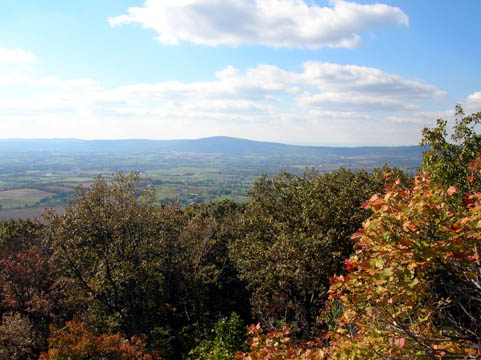
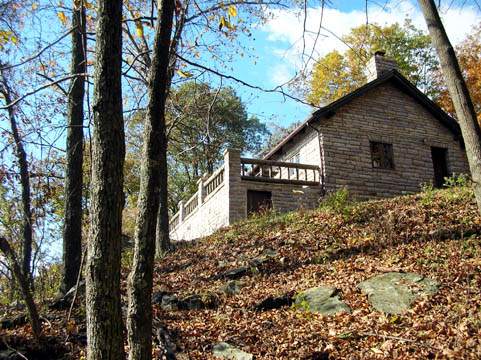
The tea house atop Catoctin Mountain at Gambrill's High Knob.
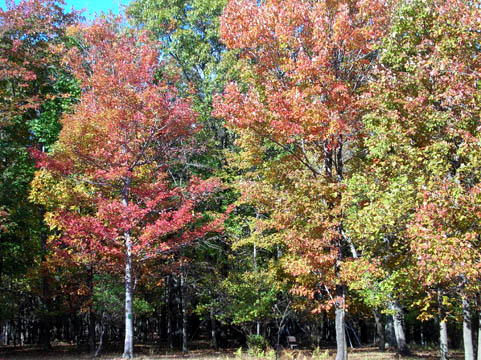
The leaves at this altitude have turned a gorgeous range of colors.
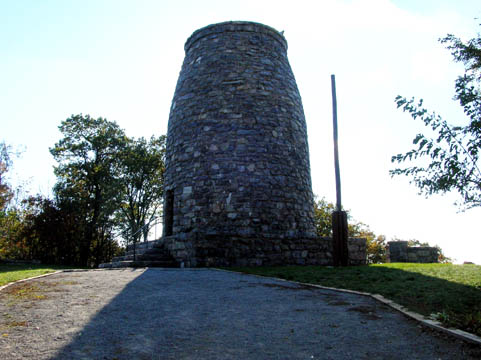
The titular feature of Washington Monument State Park casting long shadows from the sun directly behind it.
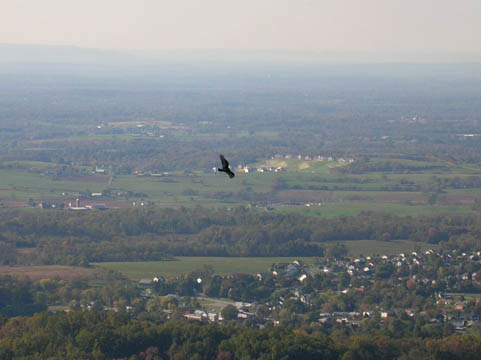
A hawk swoops past farms in the valley as seen from the top of the monument tower.
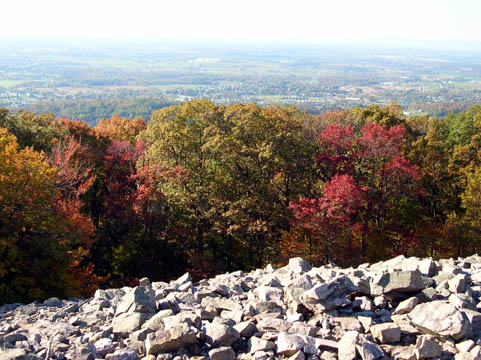
The trees up here are pretty amazing too.
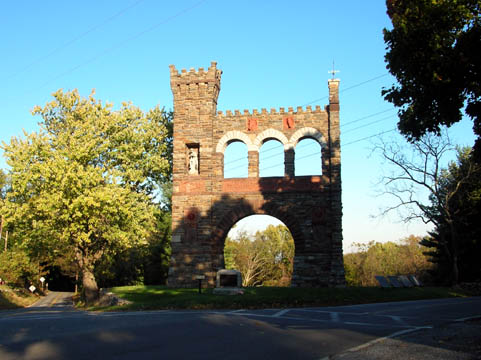
The War Correspondents' Arch at at Crampton's Gap, where a delayed Union assault on the Confederate line allowed Lee's army to escape and reorganize.
And mwahaha, my one late news article for the day: Shatner Slashes Self, Spader. He just can't resist, can he? Now I must go out and see Mars during this close approach to Earth.
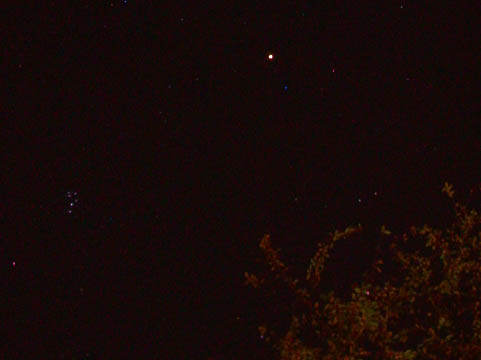
The bright spot near top center is Mars; the small kite-shaped constellation on the left is the Pleiades. I do not swear it but I believe the red star at far left may be Aldebaran, the eye of Taurus. I love my Nikon and really wish I knew how to use it properly.

No comments:
Post a Comment